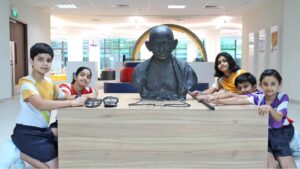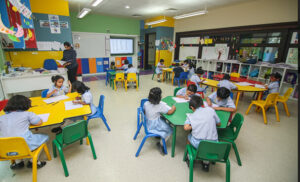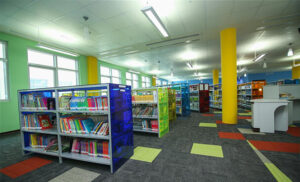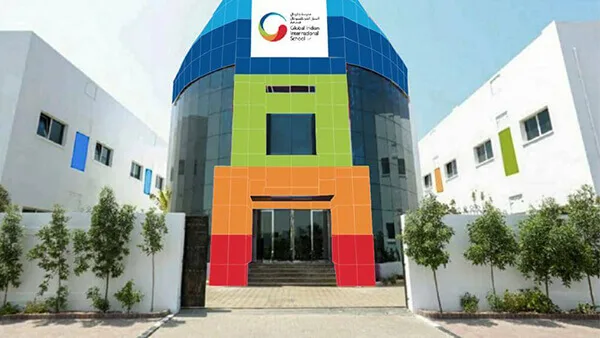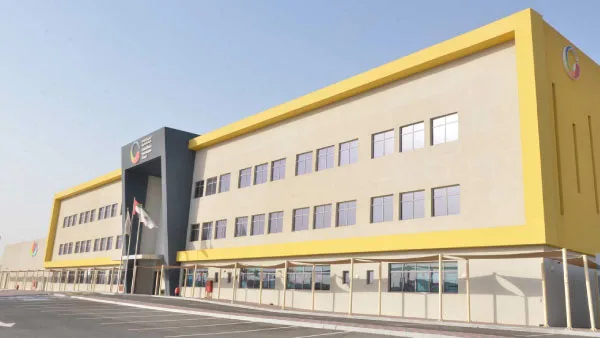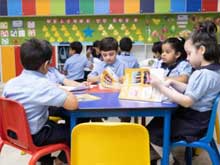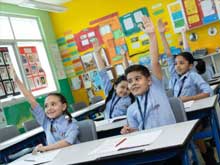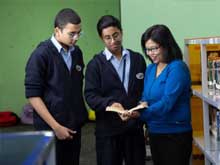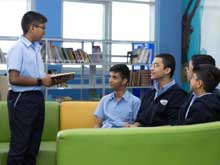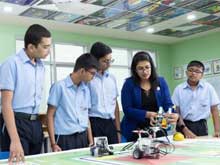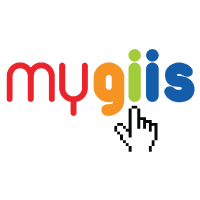In the globalized world we inhabit today, diversity is celebrated as a source of strength and prosperity. As nations continue to forge intercultural connections and build bridges across continents, the ability to communicate effectively in multiple languages has emerged as an invaluable skill. Nowhere is this more evident than in Abu Dhabi, a vibrant metropolis where languages from around the world intertwine harmoniously. With a steadfast commitment to nurturing multilingualism, Abu Dhabi recognizes the transformative power of an education system that equips its students with the ability to converse fluently in multiple languages.
In the words of Nelson Mandela, “If you talk to a man in a language he understands, that goes to his head. If you talk to him in his language, that goes to his heart.” This profound insight encapsulates the essence of multilingualism and its profound impact on fostering meaningful connections and understanding. In Abu Dhabi, a city that celebrates multiculturalism, the Importance of multilingual education and benefits for students are both vast and remarkable.

What is Multilingual Education?
Multilingual education refers to an educational approach that emphasizes the teaching and learning of multiple languages alongside other academic subjects. It goes beyond simply learning a foreign language as an isolated subject and instead integrates language learning across various disciplines and throughout the curriculum.
In a multilingual education system, students are exposed to and encouraged to develop proficiency in multiple languages, which can include the official languages of the country or region, as well as other foreign languages. The primary goal of multilingual education is to enable students to become fluent speakers, readers, writers, and communicators in more than one language
Multilingual learning can take different forms depending on the specific context and goals of the educational system. It can include bilingual education programs, where students receive instruction in two languages, or multilingual programs, where students are exposed to and learn several languages. In some cases, multilingual education may involve the use of two or more languages as mediums of instruction, allowing students to acquire knowledge in different subjects while simultaneously developing their language skills.
The Benefits of Multilingual Education for Students
Multilingualism education offers a multitude of benefits for students. Here are nine key benefits:
1. Cognitive Development: Learning multiple languages enhances cognitive skills such as problem-solving, critical thinking, and memory. It stimulates the brain, improving overall cognitive flexibility and enabling students to approach challenges from different perspectives.
2. Academic Performance: Research shows that students who engage in multilingual education often perform better academically. Multilingualism improves literacy skills, language proficiency, and overall academic achievement across various subjects.
3. Cultural Understanding and Appreciation: Benefits of being multilingual
fosters cultural understanding and empathy. By learning different languages, students gain insights into diverse cultures, traditions, and perspectives, promoting a sense of respect, tolerance, and appreciation for cultural diversity.
4. Improved Communication Skills: Multilingual education enhances students’ communication abilities in both their native language and the languages they learn. It equips them with effective listening, speaking, reading, and writing skills, enabling them to communicate fluently and confidently with individuals from different linguistic backgrounds.
5. Global Perspective: Multilingualism and education broadens students’ horizons and nurtures a global perspective. It exposes them to different cultures, worldviews, and ways of thinking, fostering a deeper understanding of global issues and promoting international-mindedness.
6. Career Opportunities: Proficiency in multiple languages significantly expands career opportunities. In today’s interconnected world, employers value multilingualism as it opens doors to international business, translation and interpretation, diplomacy, tourism, and various other fields where language skills are in high demand.
7. Increased Adaptability: Multilingualism in schools enhances students’ adaptability and flexibility. By being exposed to different languages and cultures, students develop the ability to adjust to new environments, communicate effectively with diverse individuals, and navigate intercultural situations with ease.
8. Enhanced Problem-Solving Skills: Multilingual individuals often exhibit improved problem-solving skills. Learning multiple languages requires analytical thinking, pattern recognition, and the ability to find creative solutions, skills that can be transferred to problem-solving in various contexts.
9. Personal Growth and Identity Development: Multilingual education contributes to students’ personal growth and identity development. It instills a sense of pride in their cultural heritage while allowing them to explore and connect with other cultures. Multilingualism enables students to develop a stronger sense of self, identity, and belonging in a diverse world.
Examples of How Multilingual Education Can Be Used In Elementary, Middle, And High School
Multilingual programs can be effectively implemented at different educational levels, including elementary, middle, and high school. Here are Multilingual education examples of how it can be used:
Multilingual education in Elementary School
1. Language Immersion Programs: Elementary schools can offer language immersion programs where students are immersed in a target language for a significant portion of their instructional time. For example, an Indian international school might offer a Spanish immersion program where students learn various subjects in Spanish, promoting bilingualism and biliteracy from a young age.
2. Cultural Celebrations: Elementary schools can incorporate multilingual education through cultural celebrations that highlight different languages and traditions. Students can learn songs, dances, and basic phrases in various languages, fostering cultural appreciation and understanding.
3. Language Clubs or Enrichment Activities: Elementary schools can establish language clubs or offer enrichment activities that expose students to different languages. These activities can include interactive language games, storytelling, or simple conversational practice in various languages.
Multilingual education in Middle School
1. Foreign Language Classes
Middle schools typically offer foreign language classes as part of their curriculum. These classes can focus on developing students language skills in a particular language, such as French, Mandarin, or Arabic, through a combination of speaking, listening, reading, and writing activities
2. Cross-Curricular Integration
Multilingual education can be integrated across different subject areas in middle school. For instance, social studies classes can explore different cultures and histories, while incorporating language learning components related to those cultures. Science classes can introduce scientific concepts in multiple languages to reinforce language skills alongside content knowledge.
3. Language Exchanges or Pen Pal Programs
Middle schools can establish language exchange programs with schools in other countries or regions where students can communicate with peers in a different language. Pen pal programs can be implemented to foster written communication and cultural exchange between students.
Multilingual education in high school
1. Advanced Language Courses: High schools can offer advanced language courses that cater to students who have already acquired a certain level of proficiency in a particular language. These courses can focus on more complex linguistic skills, literature, and cultural analysis.
3. Multilingual Literature and Cultural Studies: High schools can incorporate multilingual literature and cultural studies courses, where students explore literature, films, and other media in various languages. This promotes linguistic and cultural diversity while strengthening critical analysis and interpretation skills.
3. Language Certifications: High schools can provide opportunities for students to obtain language certifications, such as the DELE (Diploma de Español como Lengua Extranjera) for Spanish or the DELF (Diplôme d’Études en Langue Française) for French. These certifications validate students’ language proficiency and can be advantageous for college applications and future career prospects.
Connect GIIS Abu Dhabi with Multilingual Education for Students in school
The GIIS Abu Dhabi Kindergarten school offers multilingual programs for toddlers which helps them to learn languages quicker than in traditional schools. This early exposure to a second language increases the chance of a child being more successful at school and even as an adult.
*While Arabic is not compulsory it is still offered from Grade 1 to 8 and from Grade 9- 10 (languages offered are French, Hindi and Arabic).
Conclusion
In today’s world, the importance of Multilingual education cannot be overstated. It is not merely a matter of learning languages; it is a gateway to understanding, connecting, and thriving in an increasingly diverse and interconnected global community. Multilingual education equips students with the tools to communicate across linguistic and cultural boundaries, fostering empathy, cultural appreciation, and intercultural competence. It empowers individuals to navigate a complex world, opening doors to endless opportunities, enhancing cognitive abilities, and nurturing a broader perspective. Embracing multilingual education is not only an investment in the future but a commitment to building bridges of understanding and unity in a world that celebrates diversity.
FAQ
How Do You Teach Students in A Multilingual Classroom?
Teaching students in a multilingual classroom involves employing various strategies such as incorporating visual aids, using gestures and body language, utilizing bilingual resources, fostering peer collaboration, and providing differentiated instruction to accommodate different language levels and learning needs. The focus is on creating an inclusive and supportive environment that promotes language acquisition, cultural exchange, and meaningful engagement for all students.
What is The Concept Of Multilingual Education?
The concept of multilingual education involves integrating the learning of multiple languages into the curriculum, emphasizing the development of proficiency in multiple languages alongside other academic subjects. It goes beyond language acquisition as a standalone skill, promoting cognitive development, cultural understanding, and enhanced communication abilities to prepare students for a globalized and interconnected world.
What Are The Challenges Of Multilingual Students?
Multilingual students may face challenges such as language proficiency gaps, cultural adjustment, and maintaining academic progress in multiple languages. Additionally, they may encounter social and identity complexities, as well as the need for specialized support to ensure equitable educational opportunities and resources for their linguistic and academic development.
What is The Impact of Multilingual Education on Student Achievement?
Multilingual education positively impacts student achievement by enhancing cognitive development, improving academic performance across various subjects, and fostering critical thinking and problem-solving skills. It equips students with valuable linguistic and cultural competence, broadening their horizons and preparing them for success in an interconnected global society.
What is The Role of A Teacher in A Multilingual Classroom?
The role of a teacher in a multilingual classroom is to create a supportive and inclusive learning environment, facilitate effective communication, and adapt instructional strategies to meet the diverse needs of students from different linguistic backgrounds. They play a crucial role in promoting language development, cultural understanding, and academic success while nurturing a sense of belonging and fostering an appreciation for linguistic diversity.




